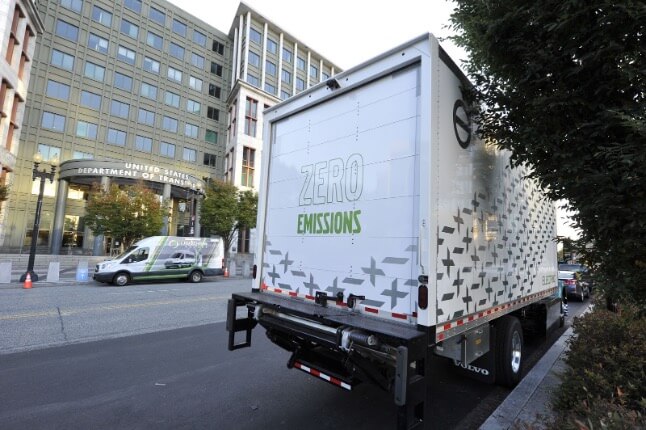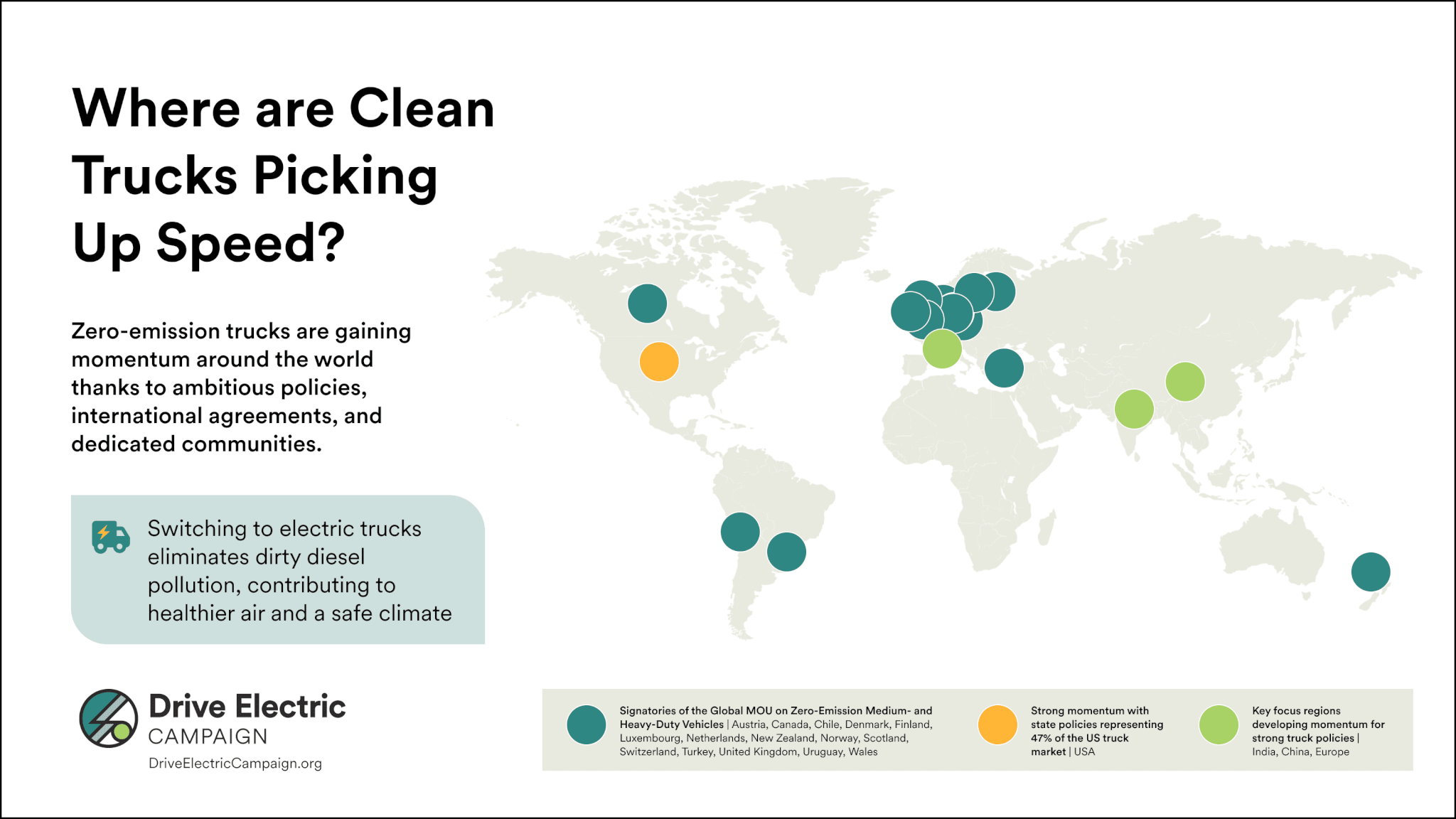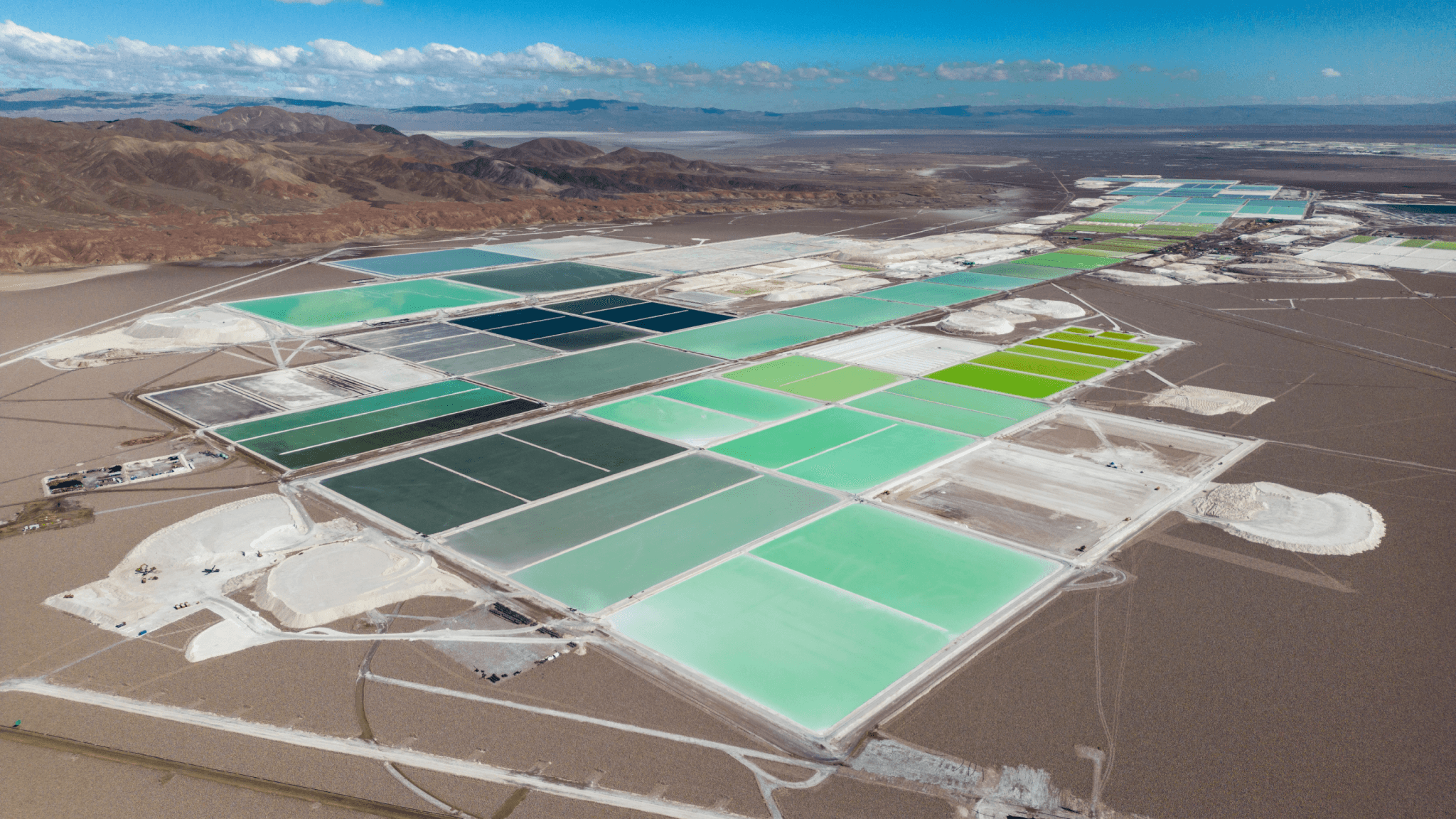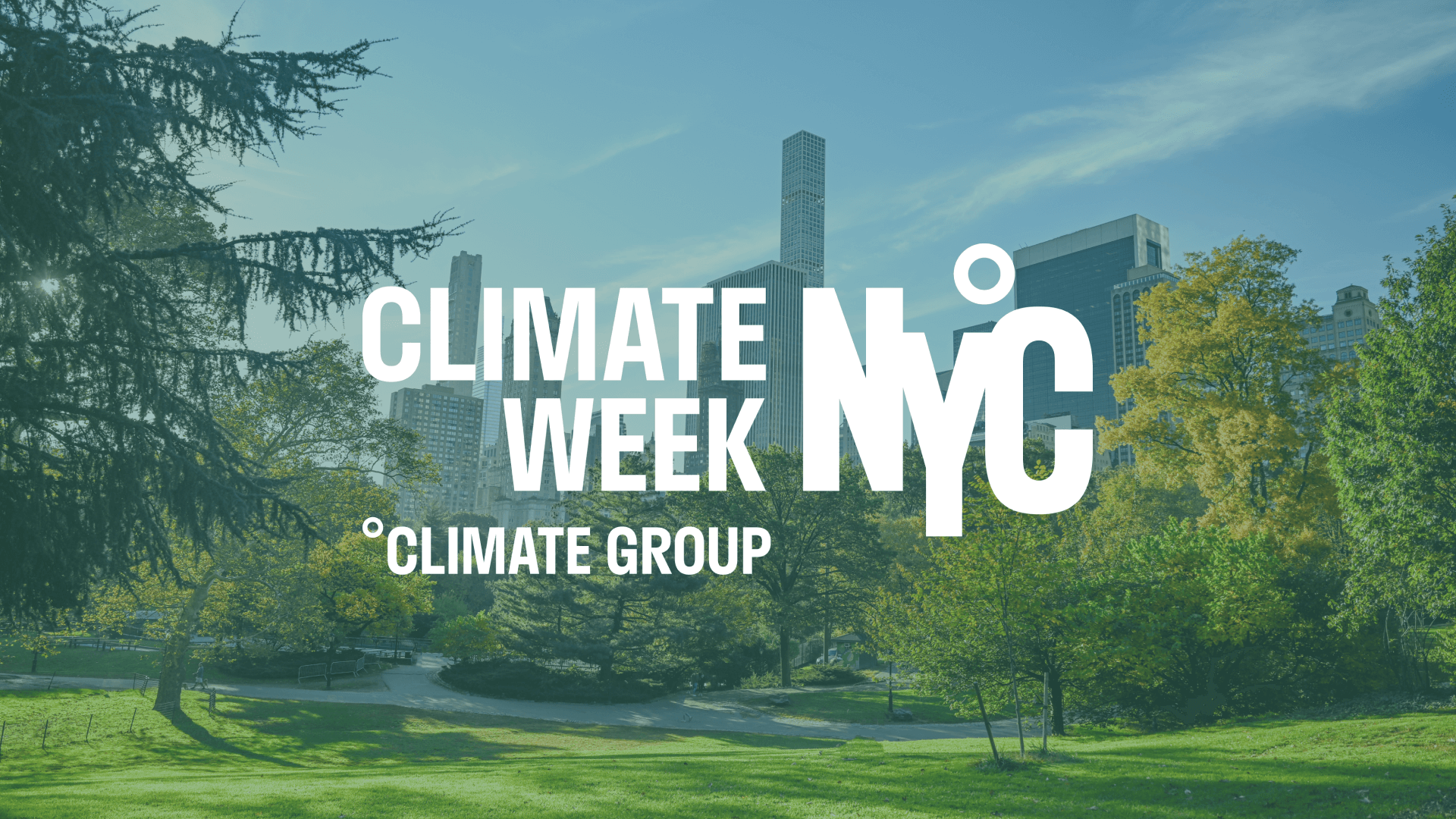Widespread electrification of road freight is within reach due to significant policy advancements supported by Drive Electric partners
This momentum comes at a critical moment for the safety of our health and the climate: in the United States alone, greenhouse emissions climbed by 10 percent in 2021 – due in large part to the increase in movement of goods by truck, plane, and ship. Beyond the global climate impact, local communities have been calling attention to the damaging health impacts from freight pollution, particularly in neighborhoods near ports and depots. The good news is that, due to recent policy support, there are more zero-emission medium- and heavy-duty (MHD) models available now than ever before, featuring nearly every application– from medium-duty box delivery trucks to heavy-duty semi-trucks.

The actions that are driving this shift to zero-emission freight include smart government policies, growing business leadership, and expanding regional and international coalitions dedicated to a cleaner freight future.
For example, in June 2020, California adopted the Advanced Clean Trucks (ACT) Rule, the world’s first Zero Emission Vehicle manufacturers requirement for trucks. The final rule was significantly strengthened, due to the efforts of a diverse coalition including representatives from frontline communities, environmental groups, businesses, labor, and health organizations. This landmark policy requires truck-makers to sell an increasing percentage of zero-emission trucks starting in 2024 through 2035. It was a major achievement for California’s clean air and climate goals that will reduce pollution that disproportionately impacts overburdened communities, create new jobs, and spur the market for zero-emission trucks within, and beyond, California.
Capitalizing on that momentum, Drive Electric partners launched a global effort to advance clean truck policies globally. The results have been impressive.

Just in 2021, five additional U.S. states have adopted the ACT: Oregon first, then Washington, New Jersey, New York, and Massachusetts. An additional 16 states are showing interest in advancing zero-emission truck policies, together representing 47% of the U.S. truck market. Many of these states are coordinating through a multi-state agreement, where governors came together to set goals to achieve 100% sales of zero-emission trucks and buses, and are working together on enabling policies and actions.
The momentum doesn’t stop at the U.S. border. At the United Nations Climate Change Conference in October 2021, Drive Electric partner Drive to Zero kicked off a global Memorandum of Understanding to raise ambition to reach 100% zero-emission medium- and heavy-duty sales between 2040 and 2050. By the end of 2021, the MOU has already helped more than a dozen countries and sub-national governments commit to a zero-emission future, accounting for 9% of the global commercial sales of freight trucks. The MOU also spans the globe from New Zealand to Uruguay and endorsements come from Scandinavian leaders like Norway, Denmark, Switzerland, Finland, and the Netherlands, to the UK, Wales, and Scotland, and EU members including Austria, Turkey, and Luxembourg. In Europe alone, these commitments represent 20% of the truck market.
Also in Europe, Drive Electric partners supported several “National Truck Platforms” in multiple key countries including Spain, Poland, France, Italy, Germany, and the UK. Each platform works locally to coordinate members like logistics companies who own trucks, retailers who need freight delivered, power providers who can benefit from and support electric trucks, advocates, and ministries who can support the transition with policies. The European Clean Trucking Alliance is a cross-national platform that connects 27 member businesses calling for rapid decarbonization of road freight. The Alliance drives support through position papers calling for increased ambition, and open letters to the EU on policies (such as the Eurovignette).
In China, the upcoming National Clean Diesel Action Plan includes zero-emission zones in Beijing and Hainan, building on the success from Shenzhen which has over 60,000 electric delivery trucks today, as well as pilot programs and specific policies to limit peak road transport emissions. In India, recent actions include standards, electric bus pilots, expanded financial incentives, and a newly launched campaign, Shoonya, supported by Drive Electric partner RMI India, to promote electric vehicles for urban deliveries.
These are just a few examples of how this work is advancing around the world. Shifting to zero-emission trucks will make a measurable difference in our everyday lives, from cleaner air in cities and near ports and distribution centers, to urban delivery that doesn’t pollute our neighborhoods.



